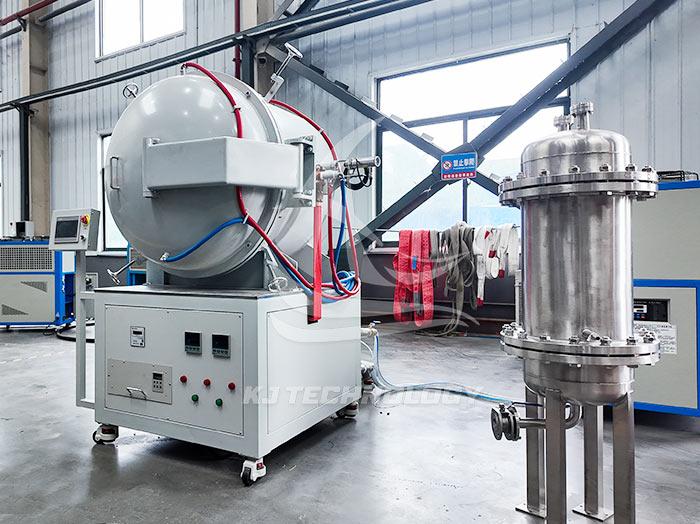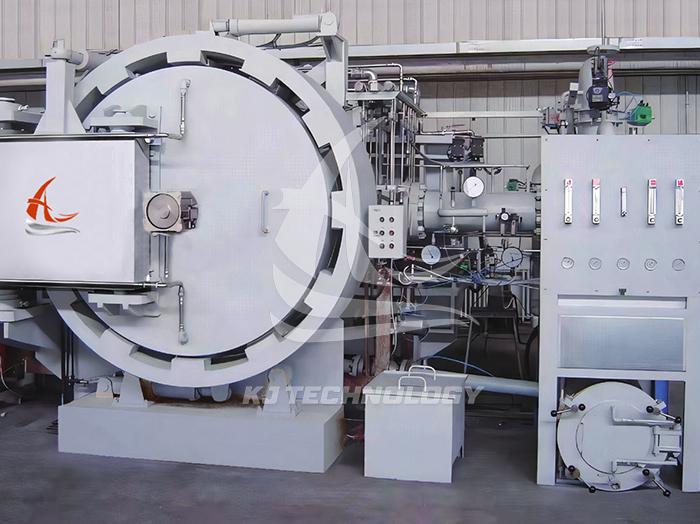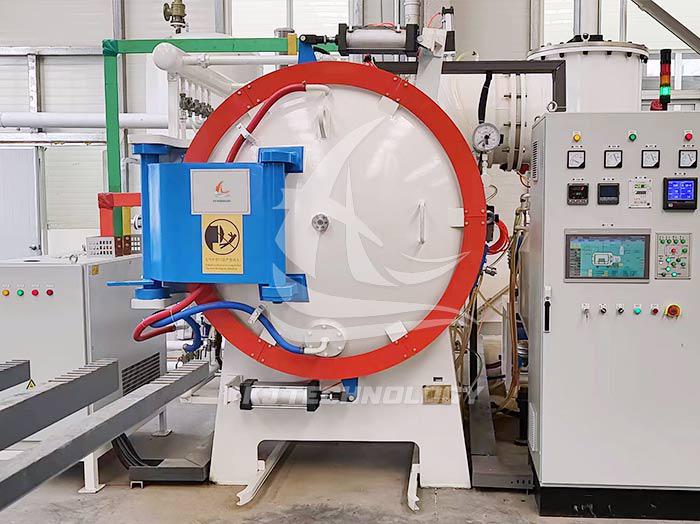What are the applications of high vacuum hot pressing furnaces in?
 07-18-2025 Author: KJ technology
07-18-2025 Author: KJ technology
The high vacuum hot press furnace plays a key role in multiple high-tech fields with its unique vacuum environment control and hot press forming technology. Its application areas can be summarized into the following four directions:
1. Core equipment for high-precision metal and alloy products in the field of powder metallurgy
Hard alloy production
Used for preparing tungsten cobalt (WC Co) alloys, titanium based alloys, etc., metallurgical bonding between particles is achieved through hot pressing, significantly improving material density (up to 99% or more) and bending strength (increased by 30-50%).
Typical applications: Wear resistant components such as cutting tools, molds, and mining tools have a lifespan 2-3 times longer than traditional sintering processes.
Metal matrix composite
Hot pressed aluminum based silicon carbide (Al SiC), magnesium based silicon nitride (Mg Si ∝ N ₄), etc., combined with metal toughness and ceramic hardness, meet the lightweight requirements of aerospace and automotive industries.
Case: A certain aviation enterprise used a vacuum hot pressing furnace to prepare titanium based titanium carbide (Ti TiC) composite materials for engine blades, which improved fatigue resistance by 40%.
Powder Metallurgical Parts
Produce high-precision silicon nitride ceramic bearings, gears, etc., eliminate pores through pressure assisted sintering, reduce friction losses, and extend service life.
2. Functional ceramics field: a powerful tool for preparing high-performance ceramic materials
Transparent ceramics
Sintering aluminum oxide (Al ₂ O ∝), aluminum nitride (AlN), etc. under vacuum to obtain high transmittance (>80%) and thermal conductivity, used for laser windows, high-pressure sodium lamp tubes, etc.
Advantages: Vacuum environment avoids the generation of impurity phases, improves material purity and optical performance.
Structural ceramics
Hot pressed silicon carbide (SiC), silicon nitride (Si ∝ N ₄), etc., with a bending strength of 800-1000MPa, are suitable for extreme environmental components such as high-temperature bearings, turbine blades, and sealing rings.
Case: A certain automobile manufacturer uses a vacuum hot pressing furnace to prepare silicon nitride ceramic substrates for electric vehicle power modules, with a 25% increase in heat dissipation efficiency.
Bioceramics
Sintered hydroxyapatite (HA) and other bioactive ceramics are used as artificial joint and bone repair materials, with both biocompatibility and mechanical strength.
3. In the field of composite materials: solutions for strong bonding of multi material interfaces
Metal ceramic composite
Hot press forming of titanium based titanium carbide (Ti TiC), aluminum based silicon carbide (Al SiC), etc. promotes metallurgical bonding between metal and ceramic interfaces through pressure, enhancing the overall performance of the materials.
Application: Aerospace hot end components, nuclear reactor structural materials.
Fiber reinforced composite
Composite carbon fiber, ceramic fiber and metal matrix, achieve uniform fiber distribution and good interface bonding through hot pressing, and improve fatigue resistance.
Case: A certain aerospace company used a vacuum hot pressing furnace to prepare carbon fiber reinforced titanium based composite materials for rocket engine shells, reducing weight by 30% while increasing strength by 50%.
Nano material solidification
Hot press nano powders (such as nano alumina and nano silicon carbide) under vacuum to avoid agglomeration and maintain material activity, which are used in the fields of catalyst carrier, high thermal conductivity materials, etc.
4. Emerging fields: key support for high-tech industries
Microelectronics and Optoelectronic Devices
Prepare high-density multilayer ceramic capacitors (MLCC), optical communication ceramic plugs, etc., achieve dense interlayer bonding through hot pressing, and improve product reliability.
Case: A certain electronics manufacturer used a vacuum hot press furnace to prepare aluminum nitride ceramic substrates for 5G communication base stations, with a 30% increase in heat dissipation efficiency.
Lithium battery separator
Hot pressed coating separator controls coating thickness, compactness, and overall flatness to enhance battery safety and energy density.
Advantages: Vacuum environment avoids coating oxidation and improves product consistency.
Special alloy forming
Prepare nickel based high-temperature alloys, cobalt based alloys, etc., refine grain size through hot pressing, and improve material high-temperature strength and corrosion resistance.
Application: Key components such as aircraft engine turbine discs and gas turbine blades.








